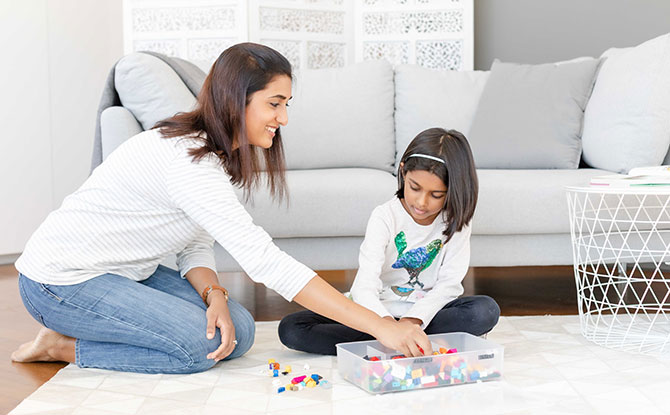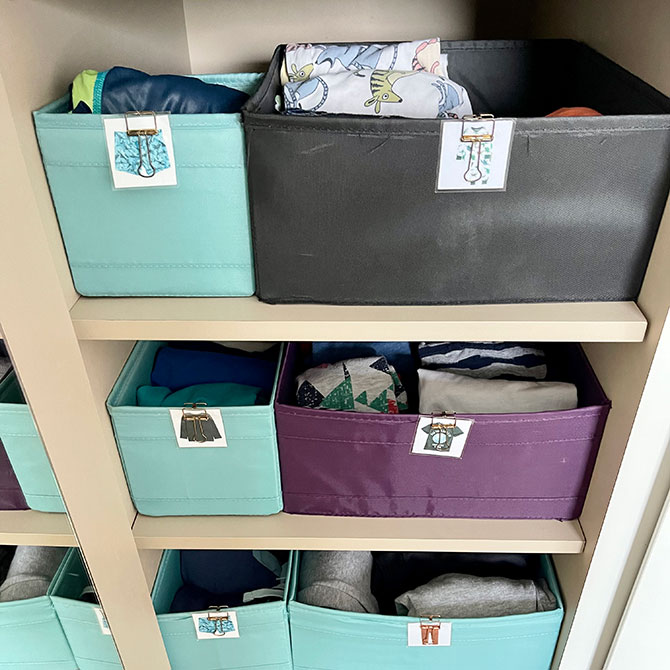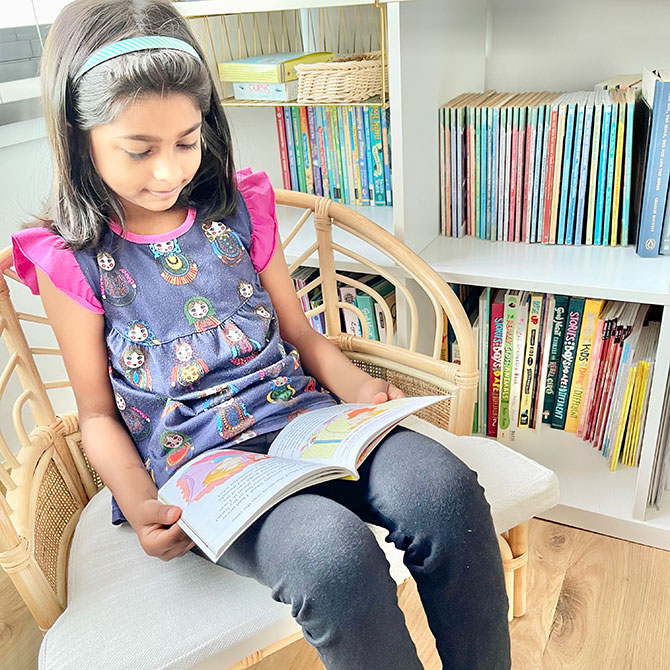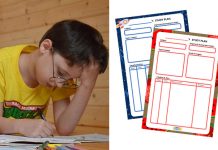
Clutter in homes can be a problem when there isn’t a consistent effort to organise the mess.
For homes with children, mess is a natural outcome, or is it?
We spoke to a Home Organising Consultant who was trained by Marie Kondo – Dr Aparna who shares with us helpful tips on organising children’s rooms.
For those of you who detest stepping on LEGO, or think there are way too many toys and wish books were read more frequently, read on. Dr Aparna’s tips will spark some joy and hope.
Year-end Holiday Camps: Discover Fun and Exciting Camps for Kids; Book Early
Farm Fright: Join City Sprouts For Their Halloween Bash On 26 Oct
Tips on Organising Children’s Rooms and Corners
Tip 1: Tidy Our Own Spaces first
First, be a role model.
“The child is sensitive and impressionable to such a degree that the adult ought to monitor everything he says and does, for everything is literally engraved in the child’s mind” – Maria Montessori
Young children between the ages of 0-6 have absorbent minds, taking in everything from their environment (the tangible & intangible aspects) allowing these to become an integral part of who they are. Older children are sensitive to morality and are quick to observe when rules are different for them & for the adults at home.
Before we start questioning why our children are “messy”, “have too many things” or even complain that they “want stuff all the time”, it’s important to self-reflect first on what OUR spaces look like that are aligned to our values. Finish tidying your own spaces first before helping your children. This way, we can be authentic in what we stand for and our homes would be homogenously positive & clutter-free spaces!
Tip 2: Tidy by Category

Most families tidy their homes by ‘location’ and not by ‘category’. They pick whichever area they think is the easiest, but this is a recipe for chaos as you would find yourself decluttering all your life as you would not remember where items are stored in the home due to them having multiple locations. To avoid getting into this cycle of constant decluttering, tidy your home by ‘category’ rather than location of your home.
The KonMari® Method is designed to start with the easier categories of the home such as clothing before moving on to books, papers, miscellaneous items, and finally sentimental items. This categorical way of tidying will help ascertain how much you own in each of the categories (instead of having unnecessary duplicates around the home) & re-evaluate purchasing and storage habits.
Use the same principles in helping children simplify their spaces WITH them by making spaces accessible with fewer options to prevent overwhelm (less is more!)
Tip 3: Help Your Child with Organising
Independence is the normal state of childhood. It is a state where the child is free from the support, influence, guidance, or control of others and is self-reliant. A child’s process of growing is a succession of acquisitions of independence.
As parents, we can:
- Provide opportunities for freedom by preparing a suitable home environment that is safe to explore on their own. See your home from your children’s perspective and have furniture, tools, clothes that can be used independently by them.
- Prepare ourselves adequately as the child’s role models by tidying our own spaces first and enjoying caring for our home.
- Invite & engage them in meaningful and purposeful work that helps them live daily life, thus helping them self-construct in their own time.
- Provide clear choices that helps in the natural development of will.
- Provide encouragement without praise. A responsive adult is the foundation for the child’s basic trust in the world.
- Respect both the child’s natural developmental needs and our needs when preparing our home environment.
Tip 4: Use Helpful Systems for Children’s Spaces
View this post on Instagram
I love using open shelving for children whether it’s an open bookcase, repurposing an existing piece of furniture like a TV console or even a cubby-style shelf. I also recommend using shallow trays or baskets to give items of similar categories a “home” so that children can see the items with ease & treat them with respect (I avoid using deep bins which make upending the contents onto the floor very inviting!). IKEA TROFAST is good for larger toys like building blocks or figurines. I also love using the IKEA KALLAX with shallow baskets for soft toys, magnetic tiles while keeping a few cubbies open for trays and board games.
Finally, label the shelves or containers with a picture of the contents or even the child’s handwriting for ease of putting away (some of the older children I work with love using a label maker too!). More importantly, involve children as much as possible in creating their space as this will encourage them to maintain it!
Tip 5: Cultivate a love of reading with purposeful display of books

When I work with clients, we set up ‘objective & intuitive’ systems that are easy for even the youngest child to understand. Some tips to displaying books for a book corner in your home are:
- Find one location of your home to display your child’s favourite books. Yes, that’s right! You don’t need to place them everywhere in the hope that your children will love reading (I’ll explain in a bit). Choose a location that has plenty of light (either natural or from another source).
- Keep only a few favourite books out at any point in time especially for younger children (based on your observation of your child) with the rest stored away for rotation.
- Place the titles in a way that makes it easy for the child to access & put away. For younger children, I recommend front-facing bookshelves while for older ones, a regular bookshelf (with baskets for separation) or cubby-style one work great! I also love adding an IKEA OSTBIT plate holder to display the front titles for their favourites!
- Arrange the books according to theme or fiction/non-fiction
- Place a cosy chair with back support to allow for good posture while reading (I would avoid bean bags or floor cushions).
More than the tangible environment, what is even more important is how the adults in the home model the love of reading in front of their children & make reading a part of the daily rhythm of the home.
Tip 6: Toys – One location, Make Wise Decisions
Over the past year of working as a KonMari® Home Organising Consultant & Parenting Coach, I’ve observed that my client families and I keep coming back to this one basic rule of taming the toy clutter in their homes: defining only one location for a particular category of items. Once a designated spot has been allocated:
- There is immense clarity on ‘how much’ to keep that adds value to their children’s play or work.
- It helps to understand that space and storage in our homes is ALWAYS finite (despite wanting to think otherwise)
- Future purchasing is kept in check as decision-making is influenced by this question: “Do I have the space for this in my home?”
Embracing the spatial boundaries our homes provide to us helps us fill them with intentional belongings that add value & joy to us!
Tip 7: LEGO! Is there a method to the madness?
To be completely honest, the systems we have been using at home for LEGO organisation has changed over the years as my children have gotten older.
- When they were younger, we used a compartmentalised IKEA GLIS storage box and organised their classic LEGO pieces by shape (rather than colour because that’s how they were looking for pieces to build their creations)
- Now, they prefer having all the LEGO classic bricks in one box and look for pieces they need for a project. They don’t want micro-organising systems anymore (as tidying took a lot longer which they didn’t appreciate). You could also use a drawstring bag that doubles up as a mat on the floor to hold all your pieces together if your child prefers to have them all in one place.
- Some of my clients use simple Ziplock pouches with an instruction booklet inside for a themed LEGO set
- The LEGO TROFAST system might work for organising pieces by colour (even for larger LEGO DUPLO)
Seven awesome tips for more organised kids’ spaces!
Thank you once again, Dr Aparna. You can check out spaces of hers and her client’s at her page here.
We are glad to hear of the handy tips and wishing all of you a successful organising journey with yours and your child’s spaces!






















